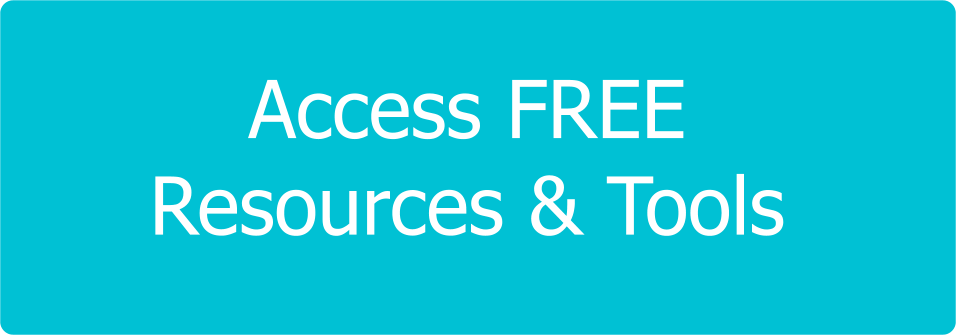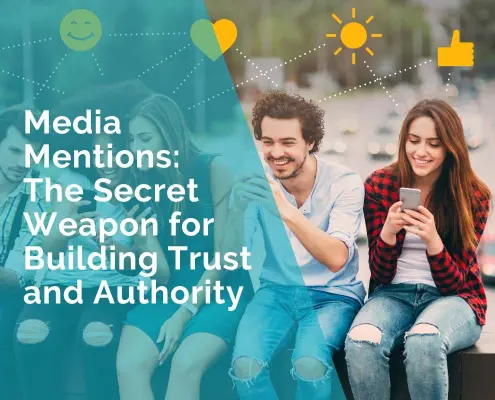7 Types of Content Your Website Needs in 2023 (+Examples)
Content marketing remains a major digital marketing tactic in 2023. Research shows that 82% of marketers are actively investing in it, and 44% of consumers are consuming 3 to 5 pieces of content before engaging with a brand. With that in mind, it’s easy to see that refusing to participate will give your competitors a significant head start.
But what types of content should you be producing as a part of your overall strategy?
A lot of brands make the mistake of focusing their attention on a limited number of content formats, expecting them to make all the difference. Instead, you should aim to produce as many of these seven types of content to ensure you are covering all your bases and providing everything your audience needs.
An Informational Landing Page
Your first order of business is to produce a landing page that is just the right balance between informational and promotional.
This is the piece of content that will most directly influence your audience. It’s meant to be a direct route to conversion.
Your aim here is to showcase the benefits of your product or service as opposed to its features. People will care very little about how you do something. All they will really want to know is what you can do for them. If you can demonstrate value and prove that you can solve their pain points, they are more likely to engage with you.
Let’s take a look at a good example of a value-based, informational landing page. This blogger outreach website is very short and cuts right to the chase. It details the benefits of using their platform, directly tying them to your success at outreach and acquiring quality backlinks.
They’ve also hit the nail on the head in terms of the amount of information they are serving. They could easily have made the page a lot more keyword-heavy. Instead, they stuck to their point, and they’re looking to wow their audience via the demo they are expecting them to request.
Testimonials
Social proof is an incredibly important part of your content marketing strategy. It should serve to validate your own sales and marketing points and to provide a source of credibility.
Testimonials are inherently more trustworthy than your own promotional copy. After all, they come from people who’d have very little interest in promoting your services or products unless they were actually worth the recommendation.
Ideally, you want testimonials on all your major pages. This will naturally include your homepage, as well as your key service or product pages.
Aim to align the testimonial with the content of the page. If the page highlights how your product can save users time, include a testimonial that testifies to that effect.
Also, try to use testimonials to shine a light on the aspect of your business that you haven’t talked about a lot. That might be the quality of your customer service or the kindness of your thank-you cards, for example.
Basecamp does a great job of utilizing their customers’ words to showcase the benefits of using their project management solution.
The informal language of their testimonials is able to highlight just how valuable it is and what benefits users can expect from it. The testimonials section of their homepage is enough to spark interest. They could have kept just that and seen a high conversion rate.
Something Interactive
Producing interactive content comes with numerous benefits. First and foremost, it helps improve time on page and user engagement rates. It has the potential to provide an unsurpassed level of value to your audience.
You can produce all kinds of interactive content, such as:
- calculators and other tools
- interactive infographics
- surveys and polls
- Quizzes, etc.
The key is to align them with your brand and your product or service. There should be a natural connection between the content and conversion.
Case in point, this 1-rep max calculating tool from a brand that sells supplements. A large portion of their audience will want to use it. They’ve managed to cleverly insert some of their products on the page. They can easily direct traffic to other pieces of content on their website.
Interactivity also has the potential of becoming the cornerstone of your entire brand, as is the case with this word finder for Scrabble. It’s centered around interactivity (i.e., helping you find a great word for the game) and providing value. The brand can earn a steady income via ads and product placements, while boosting all relevant page metrics with their tool.
Something Promotion-Heavy
While the main purpose of your website content should not be to push your products or services, there is certainly a need to produce some very promotion-heavy content. This is where your agenda is clearly to demonstrate the value of your product, show it in action, and make a sale.
How does this differ from the rest of your content? Let’s look at it through an example. This page on black and white Lightroom presets features a demonstration of each individual preset. Its aim is clearly to show what each of them looks like, and the purpose is obviously to get you to download them.
On the other hand, the brand also has posts on how to install presets, for example. That is not a promo post. It’s an informational post that is meant to rank well, gain some traction, and then funnel visitors further.
Make sure to find a good balance between these types of posts, and ensure that your audience also gets both value and a sales pitch.
Something with a Twist
Speaking of blog posts, you should also aim to write something that falls slightly outside the box, so to speak.
Most brands will write the same types of blog posts — comparisons, listicles, how-tos — answering a specific question. In order to spark some additional interest and create content that is more likely to get readers interested, you need to think differently.
Your basic task is the same: you are covering a certain range of topics that align with your brand and that would be of interest to your readers. However, you want to make them funnier, more experiential, experimental, show them from a different angle, etc.
You don’t have to do any specific keyword research here, as you are not trying to rank for a popular term.
Let’s look at this post on Benjamin Franklin’s daily schedule.
According to Ahrefs, the posts ranking at the top for the “Benjamin Franklin schedule” term see around 300-500 monthly visits. But it’s a great one to post on social media, a great conversation starter with your audience, and certainly something that is more likely to be read top to bottom than other posts.
An occasional post such as this will help you become more memorable in the minds of your more interested audience segment, which you can then leverage for more conversions.
A Listicle
And now for a more traditional type of blog post: the listicle. Its aim is to provide as much valuable information to your readers as possible, in an effort to help them make a decision.
It does not necessarily need to be a purchasing decision. However, a reader should walk away from the post in possession of all the relevant information about a certain topic or a list of products, services, effects, facts, etc.
A very popular listicle type is the product comparison, which helps you decide which product would best fit your needs. This guide on the best mattresses made in the USA is a good example.
It targets a very specific audience (those looking for US-made mattresses), and it helps them understand which one would work best for their sleep needs.
It can be tricky to create this type of list about your own product or service, which is why you should be looking at adjacent ones. For example, if you sell shoes, that can be a list of socks. Make sure you are honest and offering honest, valid recommendations based on facts.
Case Studies
Finally, let’s discuss the importance of case studies for your content marketing needs.
Essentially, case studies are one of the most versatile and credibility-boosting types of content you can create. They will directly prove your expertise and demonstrate the benefits of working with your brand.
They are a great way to capture leads and further guide them down your sales funnel. Plus, they can be promoted via email and social media; they will earn you links and media mentions.
A quality case study is one that relies on cold, hard facts. You can, of course, pepper it up with some storytelling (and you most definitely should), but the facts are the key element here.
Tell the story of your client or customer, tell the story of your brand, tell an imaginary story of how you can help your leads succeed, and then prove it with the data. Make sure you present it in an understandable way: charts, graphs, and infographics are your friends here.
Ahrefs’ studies are a great example of case studies done right. They rely on the brand’s product and demonstrate exactly how far you can flex its muscles, and they are immensely valuable to their audience. They are also very linkable, earning them a lot of free press.
Case studies are easiest to execute in tech niches, but you can get creative and come up with them even if you make toothbrushes. You may not see as much traffic, but the credibility and shareability effect will be the same.
Wrapping Up
Before you begin producing any new website content or rethinking your existing strategy, take a look at your competitors and the gaps they may not be filling for your audience. Also consider what your audience likes the most, both on your website and on your competitors’.
Once you’ve identified the types of content that are the most likely to have the best effect, start from there and work your way through the rest of the list over time.













